OMA-designed exhibition in Paris celebrates the work of architect Auguste Perret
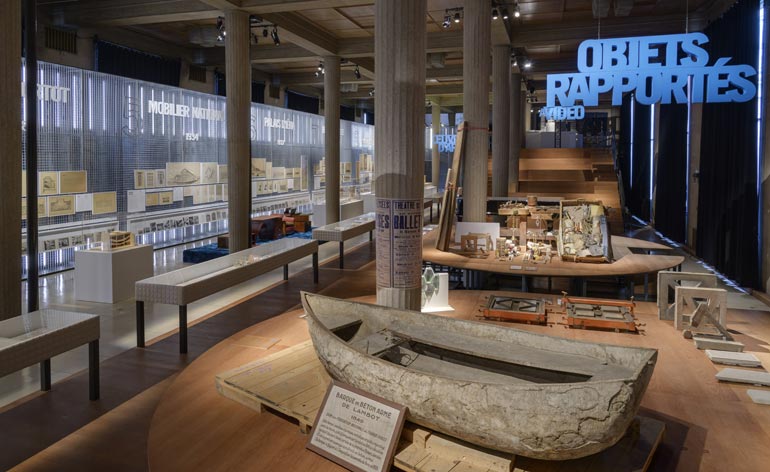
During the opening of 'Auguste Perret: Eight Masterpieces' in Paris, architect Rem Koolhaas shepherded Miuccia Prada through the pillared room of the Palais d'Iéna, pointing out various features of the exhibition. The Palais d'Iéna itself is one of Perret's masterpieces, as well as the venue for Prada's Miu Miu catwalk shows, often featuring set designs by Koolhaas and his Rotterdam-based practice OMA.
Curator Joseph Abram proposed the show to the Economic, Social and Environmental Council (ESEC), the body that currently occupies Perret's Parisian landmark. The Fondazione Prada agreed to fund it, but only if Koolhaas designed the scenography. Says Abram: 'Madame Prada is an extraordinary patron and the collaboration with Koolhaas has been a true luxury.'
The Dutch architect reused some of his earlier design elements for this space, such as an illuminated metal cage that runs along the left wall from which Perret's architectural drawings hang. The masterpieces are lined up in chronological order: from the rue Franklin apartments that established the Frenchman's reputation a century ago to the soaring concrete spire of the Saint-Joseph Church in Le Havre, named a UNESCO World Heritage Site in 2005. Dedicating the exhibition to eight buildings allowed the curators to demonstrate in detail the creative process behind each one - how the French architect reconciled modernism with classicism and found grace in reinforced concrete.
On the opposite side of the space, visitors can explore the buildings' ongoing existence through a contemporary lens: watch a new film tracing the residents and use of these places or flip through oversized photo albums of the buildings by photographer Gilbert Fastenaekens. The show also features architectural models, furniture, photographs and personal paraphernalia, including a glowing fan letter to Perret from the artist Jean Dubuffet in 1946.
Perret originally designed the Palais d'Iéna as a museum of public works. Little did he know that one day it would serve as an exhibition space for his own greatest hits.
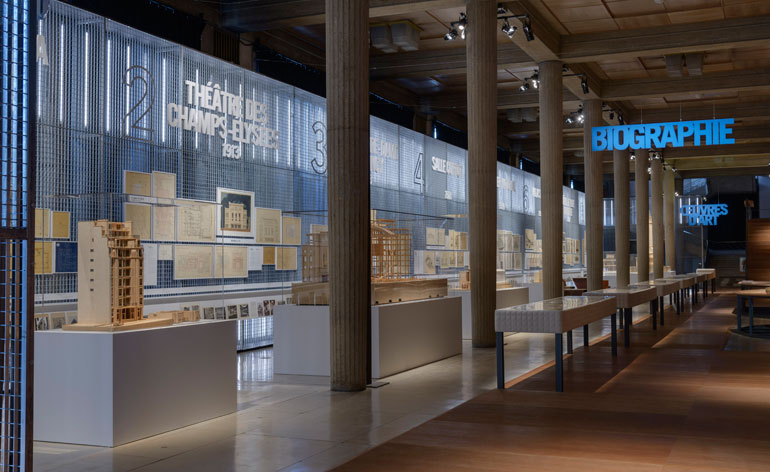
Rotterdam-based architecture firm OMA conceived the show's design, in collaboration with Fondazione Prada. OMA's Rem Koolhaas reused some of his earlier design elements for this space, such as an illuminated metal cage from which Perret's architectural drawings hang. Courtesy Fondazione Prada and CESE.
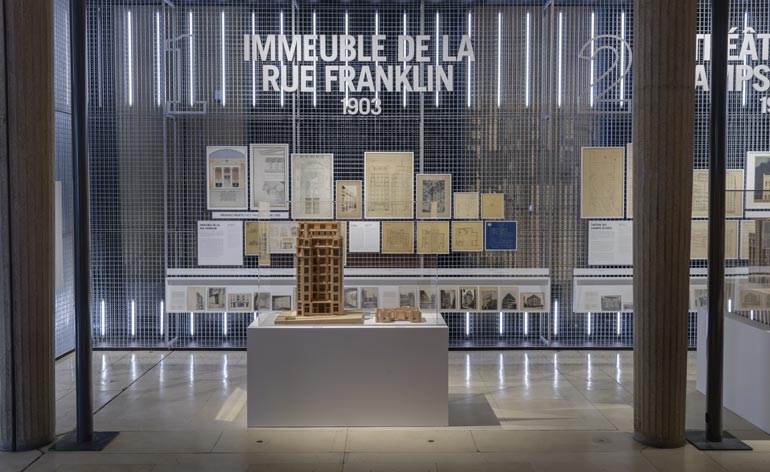
Perret's masterworks are lined up in chronological order, beginning with the rue Franklin apartments that established the Frenchman's reputation a century ago. Courtesy Fondazione Prada and CESE.
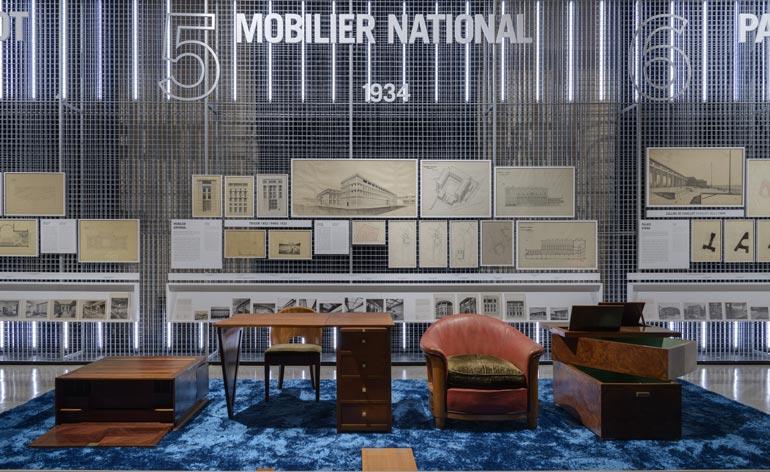
The show also features architectural models, furniture (pictured), photographs and personal paraphernalia. Courtesy Fondazione Prada and CESE.
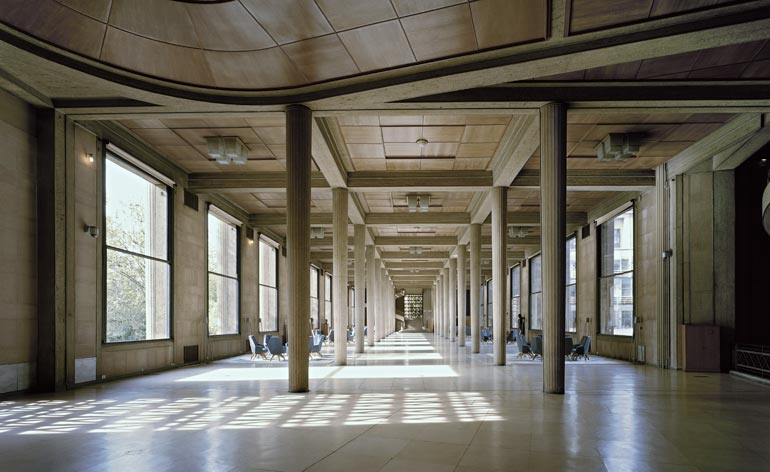
The hypostyle hall of the Perret-designed Palais d'Iéna was completely transformed by OMA for the exhibition.
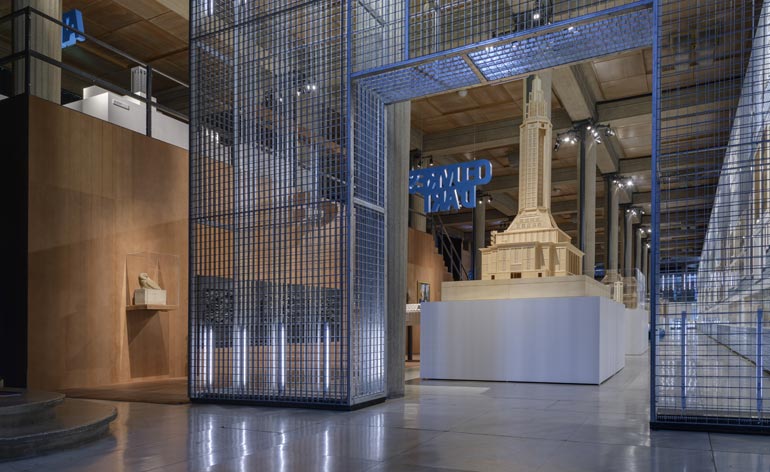
Koolhaas' metal cage design frames Perret's model for his Saint-Joseph Church in Le Havre. Courtesy Fondazione Prada and CESE. courtesy Fondazione Prada and/et CESE
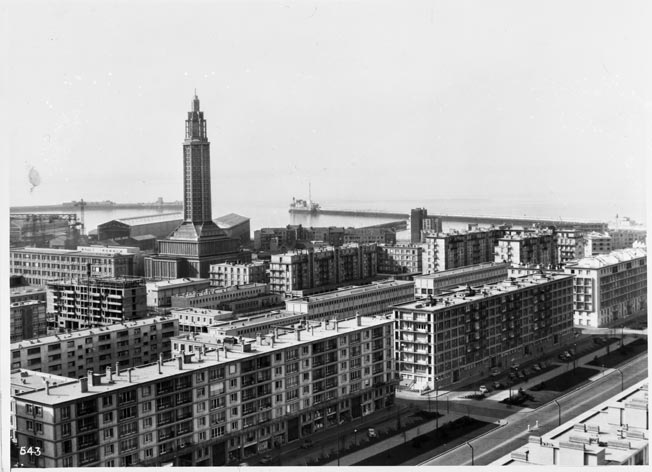
An archival photograph from the show casts an aerial view towards the Saint-Joseph Church in Le Havre, named a UNESCO Heritage Site in 2005
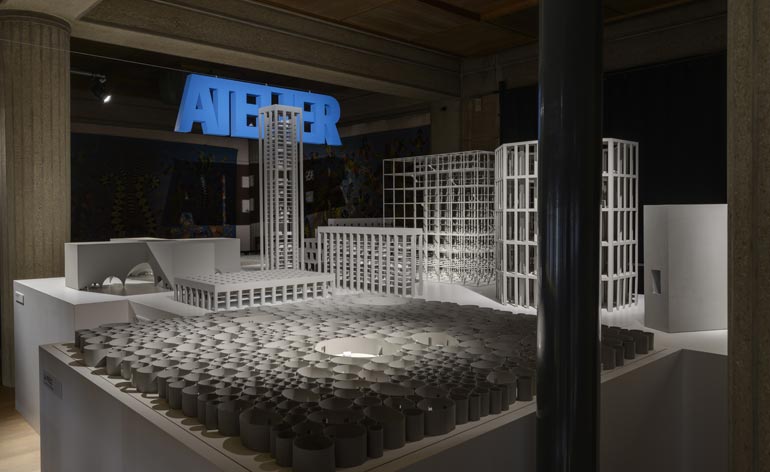
Installation view of 'Auguste Perret: Eight Masterpieces'. Courtesy Fondazione Prada and CESE. courtesy Fondazione Prada and/et CESE
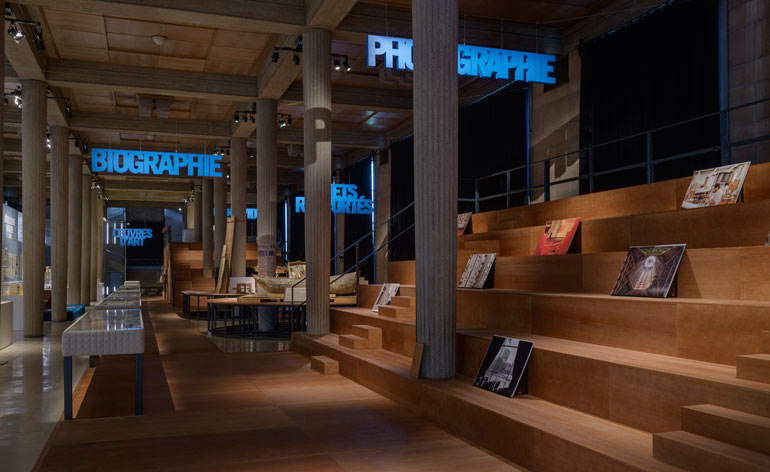
Visitors can explore the buildings' ongoing existence through a contemporary lens through oversized photo albums of the buildings by photographer Gilbert Fastenaekens. Courtesy Fondazione Prada and CESE. courtesy Fondazione Prada and/et CESE
ADDRESS
Palais d'Iéna
9 Place d'Iéna
75016 Paris
Wallpaper* Newsletter
Receive our daily digest of inspiration, escapism and design stories from around the world direct to your inbox.
-
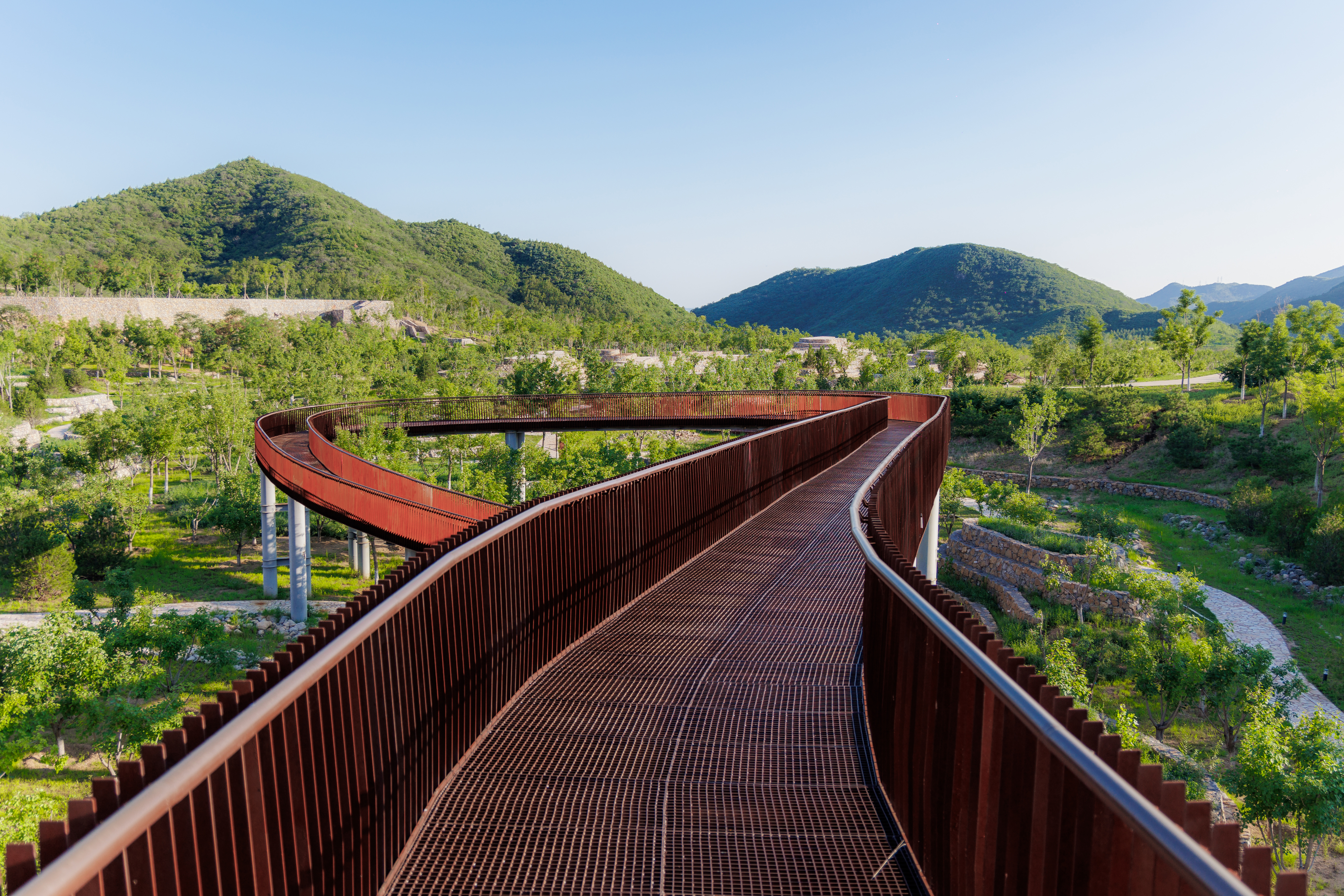 A Xingfa cement factory’s reimagining breathes new life into an abandoned industrial site
A Xingfa cement factory’s reimagining breathes new life into an abandoned industrial siteWe tour the Xingfa cement factory in China, where a redesign by landscape specialist SWA Group completely transforms an old industrial site into a lush park
By Daven Wu
-
 Put these emerging artists on your radar
Put these emerging artists on your radarThis crop of six new talents is poised to shake up the art world. Get to know them now
By Tianna Williams
-
 Dining at Pyrá feels like a Mediterranean kiss on both cheeks
Dining at Pyrá feels like a Mediterranean kiss on both cheeksDesigned by House of Dré, this Lonsdale Road addition dishes up an enticing fusion of Greek and Spanish cooking
By Sofia de la Cruz
-
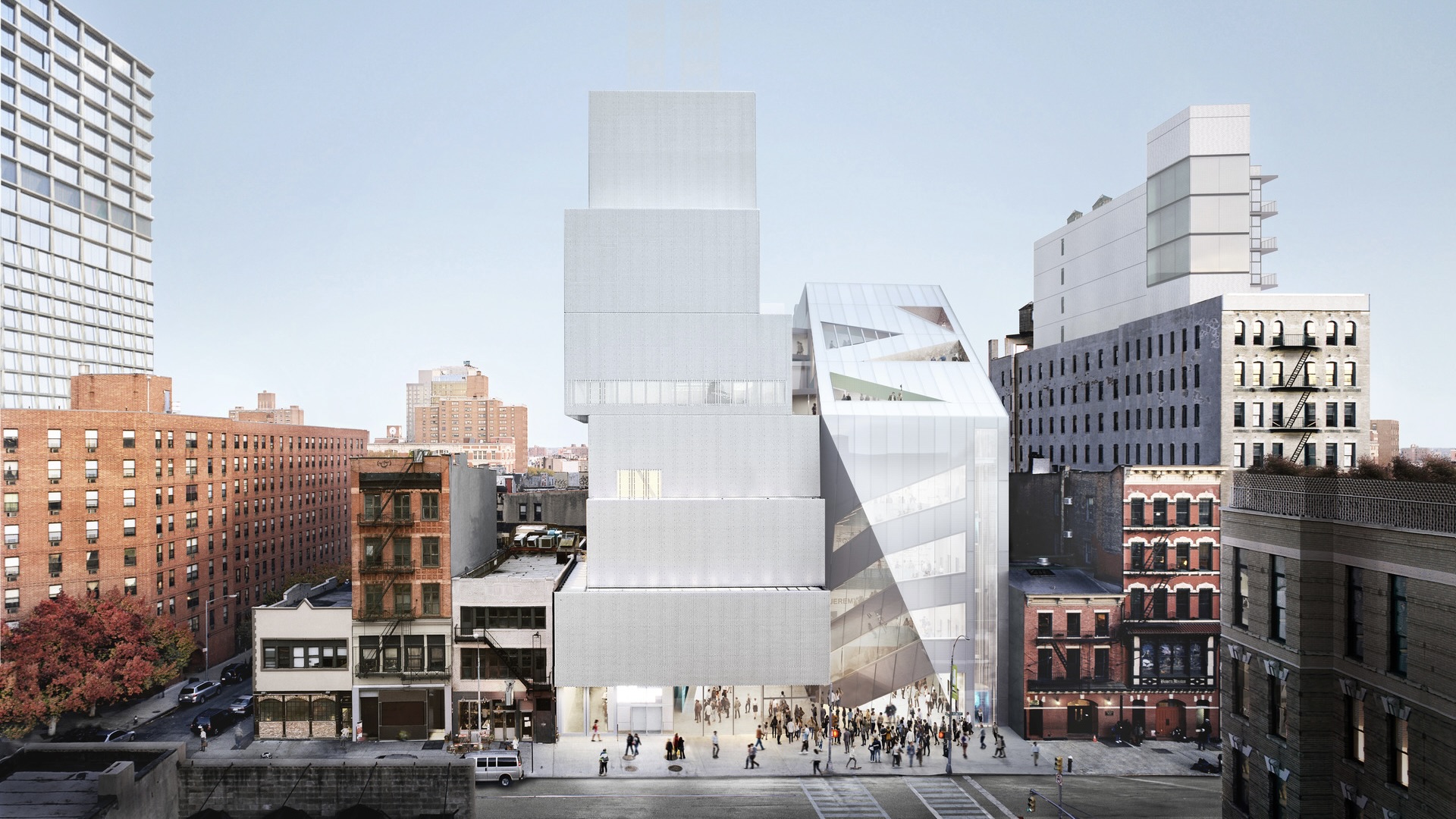 NYC's The New Museum announces an OMA-designed extension
NYC's The New Museum announces an OMA-designed extensionOMA partners including Rem Koolhas and Shohei Shigematsu are designing a new building for Manhattan's only dedicated contemporary art museum
By Anna Solomon
-
 Turin’s Museo Egizio gets an OMA makeover for its bicentenary
Turin’s Museo Egizio gets an OMA makeover for its bicentenaryThe Gallery of the Kings at Turin’s Museo Egizio has been inaugurated after being remodelled by OMA, in collaboration with Andrea Tabocchini Architecture
By Smilian Cibic
-
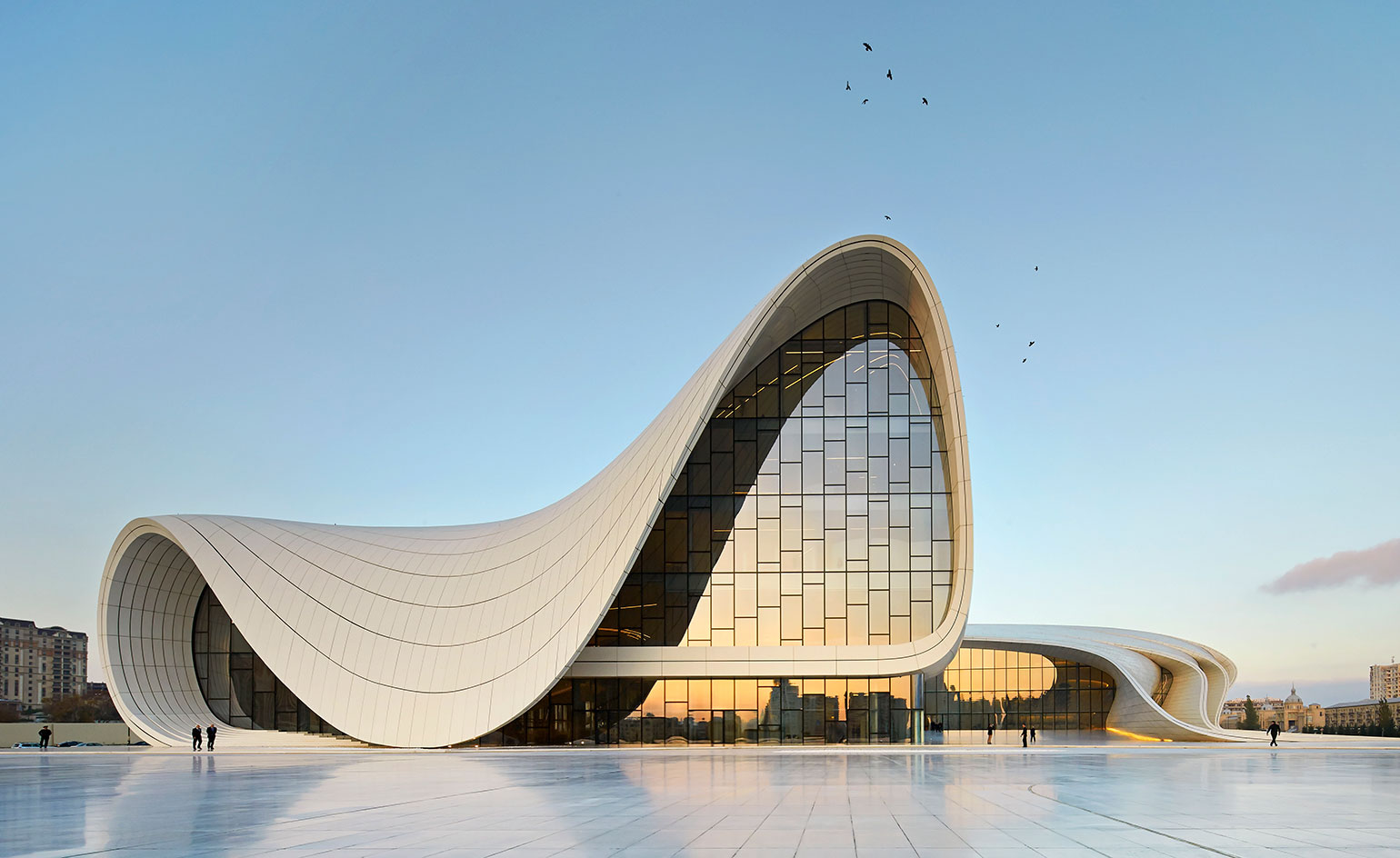 A guide to Zaha Hadid: from architecture to making 'a big hole' in Wallpaper*
A guide to Zaha Hadid: from architecture to making 'a big hole' in Wallpaper*Dame Zaha Hadid was a global, Pritzker Prize-winning architect and a force of nature; in this ultimate guide to her work, we celebrate her life, career and legacy
By Ellie Stathaki
-
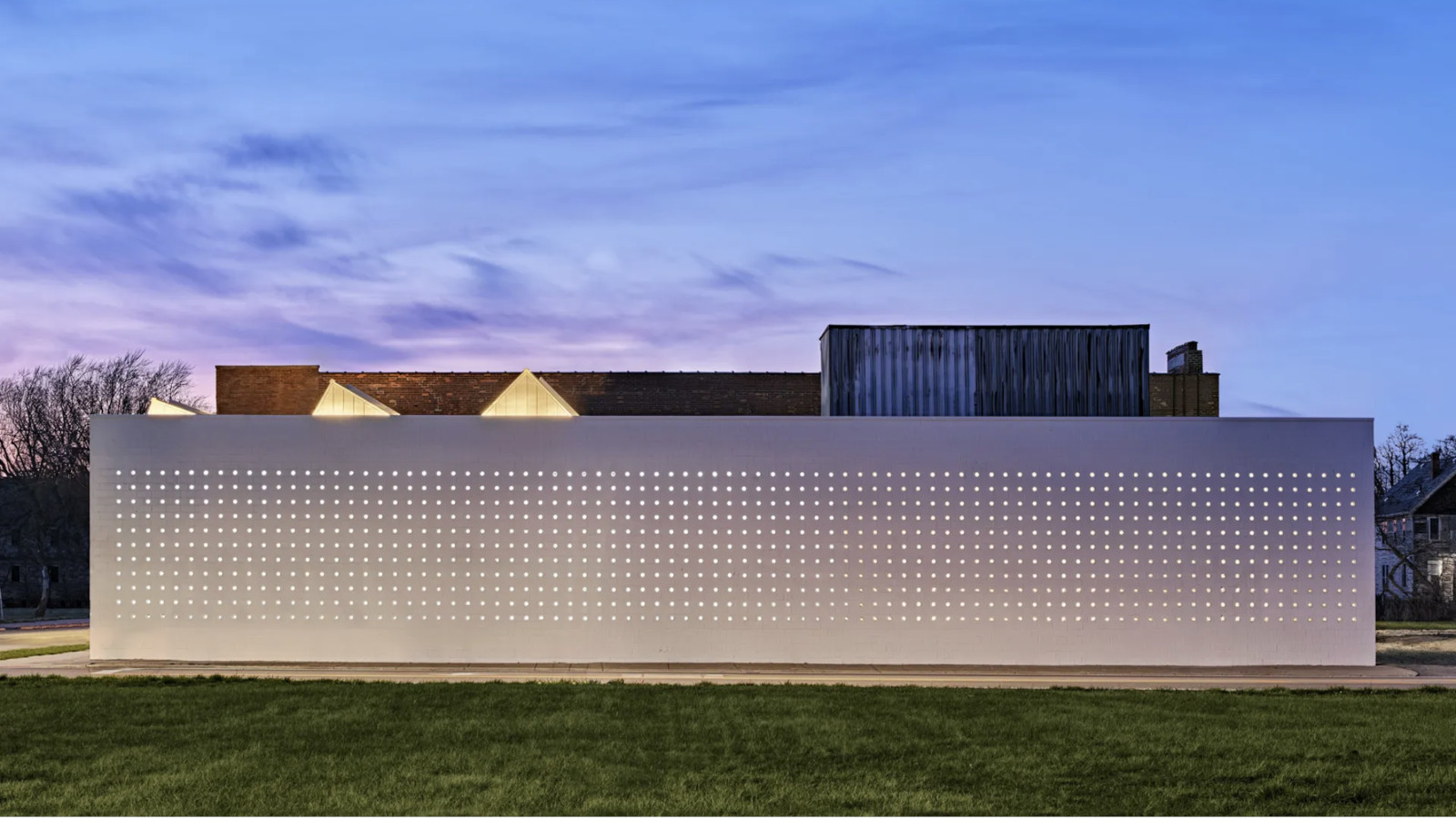 The Lantern cultural hub in Detroit by OMA balances ‘light touch’ and ‘dramatic impact’
The Lantern cultural hub in Detroit by OMA balances ‘light touch’ and ‘dramatic impact’Library Street Collective’s Lantern, a new cultural hub in Detroit, was designed by OMA New York and is a signature rebuild that makes the most of the site’s existing structures
By Siska Lyssens
-
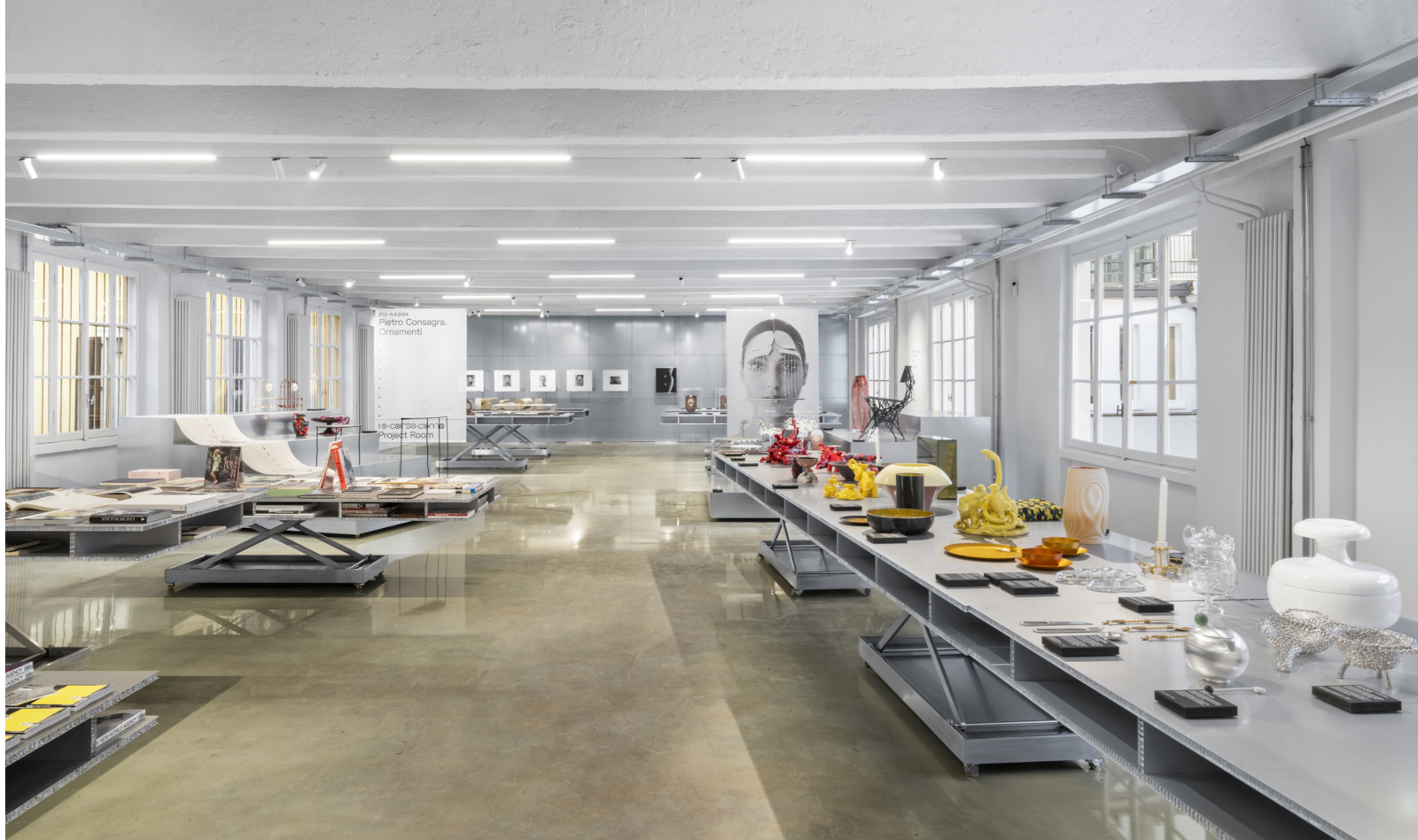 Milan’s 10 Corso Como revamp nods to the concept store’s industrial character
Milan’s 10 Corso Como revamp nods to the concept store’s industrial characterMilanese concept store 10 Corso Como unveils its new look by 2050+, a stripped-back design that nods to its 20th-century character
By Ellie Stathaki
-
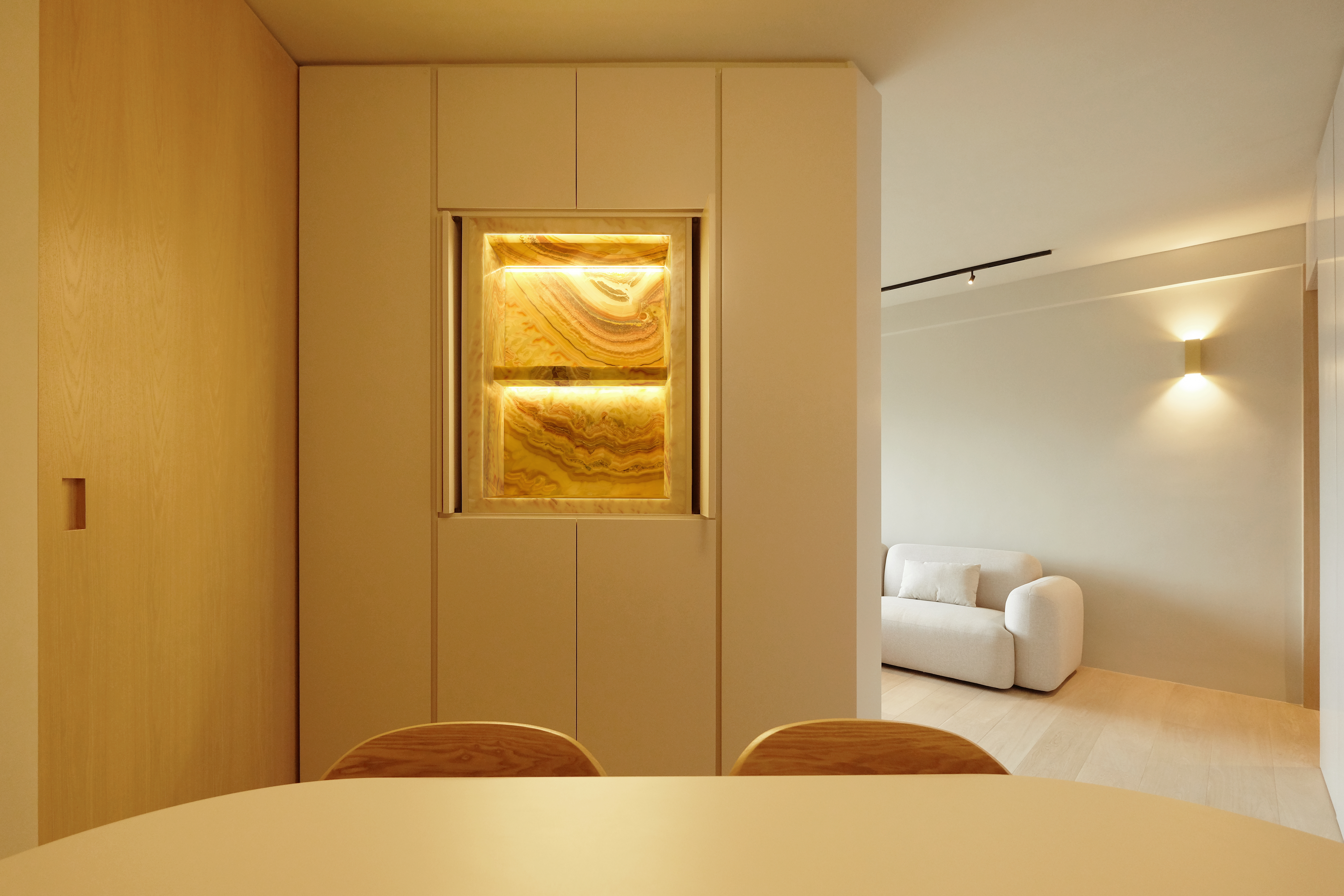 Collective, Hong Kong and Spain: Wallpaper* Architects Directory 2023
Collective, Hong Kong and Spain: Wallpaper* Architects Directory 2023With bases in Hong Kong and Spain, Collective joins the Wallpaper* Architects’ Directory 2023, our annual round-up of exciting emerging architecture studios
By Ellie Stathaki
-
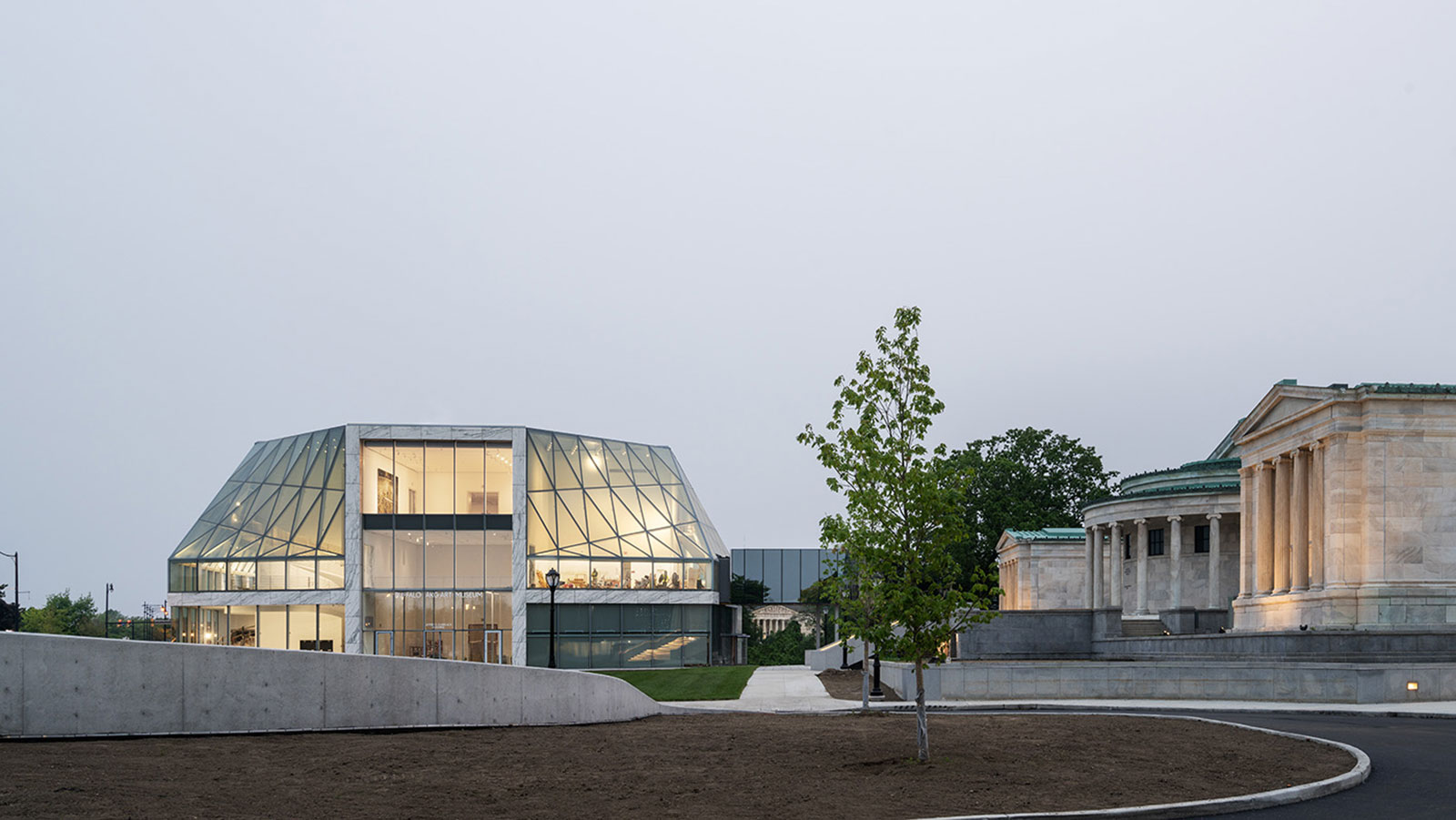 Buffalo AKG Art Museum opens, inviting us into its OMA-designed home
Buffalo AKG Art Museum opens, inviting us into its OMA-designed homeBuffalo AKG Art Museum opens its new, OMA-designed home in the USA
By Ellie Stathaki
-
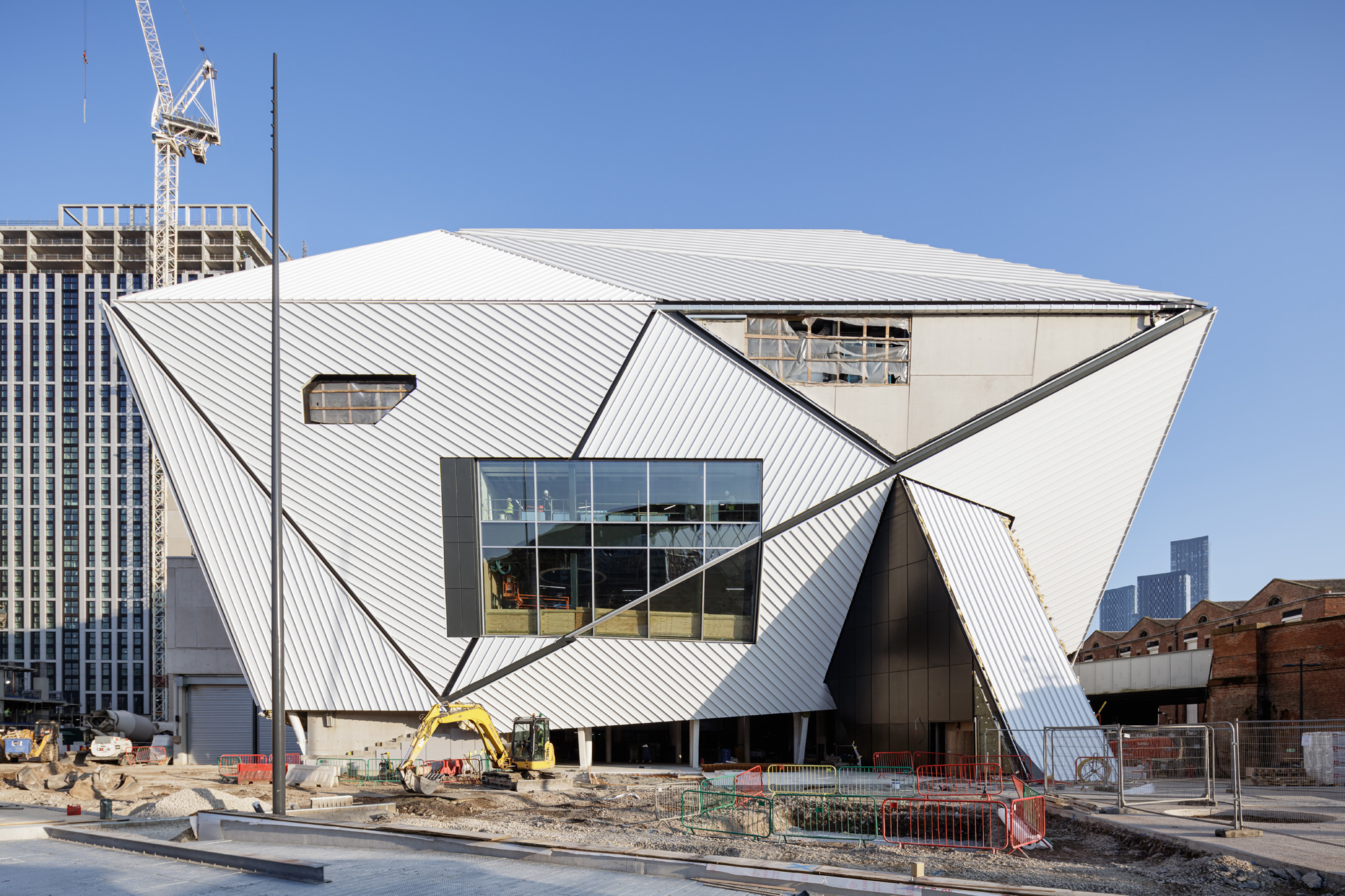 Factory International by OMA is set to be a moveable feast
Factory International by OMA is set to be a moveable feastFactory International by OMA is a Manchester cultural centre designed to break barriers between audience and performer
By Ellie Stathaki